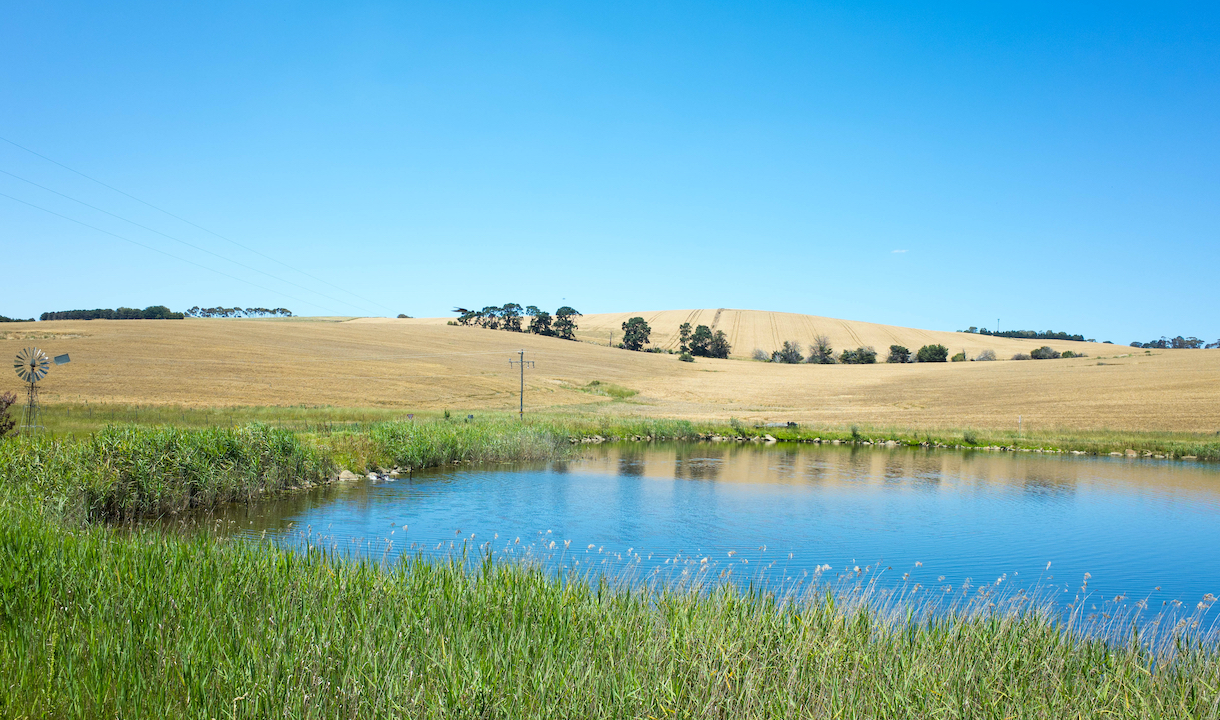While it is always a good idea to monitor your water quality, it is even more important to keep a close eye on it when your pond is located within an agricultural watershed.
Runoff in agricultural watersheds often carries organic matter and chemicals that can seriously impact your fishery. Nutrient loading, pesticide/insecticide contamination, and soil erosion are significant concerns common to ponds and lakes in the agricultural areas of Texas.
At Pond King, we’ve had the experience examining each of the issues associated with ponds in agricultural watersheds and understand the techniques to diminish their respective impacts.
One of the first issues to address is that of nutrient loading.
Nutrient Loading

Nutrient loading refers to the amount of nutrients that enter an ecosystem over a period of time.
In most cases, this occurs from the intentional application of fertilizer or runoff carrying fertilizer from surrounding pastures or fields. We have talked about the importance of fertilizing your lakes in other blogs, but we haven't examined the implications of fertilizer runoff from agricultural fields and pastures.
Of all the nutrients found in fertilizers, phosphorus concentrations pose the most significant threat in aquatic environments. While low concentrations of phosphorus limit the productivity within your ecosystem, concentrations that are too high can cause substantial algae growth, which can create an entire set of issues on their own.
There are three nutrient loading scenarios associate with runoff and fertilizer:
- Nutrient loading from runoff alone can provide sufficient nutrients to your ecosystem; however, any additional fertilizer can lead to excessive vegetation issues.
Nutrient loading at this level is not a bad situation because it "naturally" maintains high productivity levels and requires less maintenance on your part. - If there is an excessive amount of fertilizer in the runoff, that can lead to excessive nutrient loading, immediately causing nuisance aquatic vegetation and algae issues.
This scenario often happens to ponds in livestock pastures or neighborhood ponds where the water runs off the highly fertilized lawns directly into the pond. While this can lead to a lot of headaches treating vegetation, there are ways to mediate the effects.
For example, you could apply a product called Phosloc to bind with unused phosphate molecules to aid in the prevention of excessive algae growth. The application of Phosloc results in fewer free phosphate molecules available to promote vegetation growth. - Insufficient nutrient loading occurs when runoff does not produce enough phosphorus concentrations to influence the ecosystem significantly. While this scenario still allows you the option to fertilize your pond, it does make it difficult to accurately determine the amount of fertilizer needed to produce a healthy algal bloom.
It is best to err on the side of caution and make smaller, more frequent applications until you achieve the desired clarity/ phytoplankton community.
You could also forgo the fertilizer all together and keep the pond clear for swimming or aesthetic purposes.
Consider Having a High Quality Water Test on Your Reservoir
A water quality test will help you understand which of these scenarios applies to your pond and guide your future management plans.
Testing is strongly recommended before any fertilizer applications to determine existing nutrient concentrations to prevent over-applying phosphorus and causing yourself future headaches dealing with vegetation treatments/management.
Pesticide/Insecticide Runoff
Chemical runoff from treated areas can be washed in from runoff in much the same way as nutrients.
Excessive chemical concentrations can cause fish kills, vegetation die-off, and other potential water use hazards. These hazards come from off-site contamination before the pesticides can either be absorbed into the targeted pest or have sufficiently broken down or degraded to safe levels, causing water use restrictions or bioaccumulation.
Can You Mitigate Chemical Imbalances in Ponds?
Unfortunately, chemical influence can be difficult to notice prior to observing its negative effects. One of the best ways to prevent/moderate chemical influence in the ecosystem is by creating a buffer zone around the outside of the pond to slow down runoff and absorb the chemicals before they enter the water.
Soil erosion
Erosion is another common issue within agricultural watersheds.
Erosion is often caused by surface runoff or even livestock around your pond. Increased sedimentation rates from runoff can decrease the time to pond succession, so it's important to limit these impacts to prolong the life of your ecosystem.
As mentioned with preventing chemical contamination, maintaining a buffer zone around the pond with beneficial vegetation such as Spike Rush or American Water Willow can help stabilize the shorelines, preventing erosion into the pond.
Additionally, a buffer of healthy grass around the lake will help slow any runoff and deposit any sediment outside the pond. Concerning livestock tanks, limiting livestock access to select portions of the pond will also help manage and control erosion and bank degradation.
Buffer Zones are Crucial for Maintaining Pond and Lake Water Quality
When maintaining a pond within an agricultural watershed, the main priority should be keeping buffers around the pond. Buffers should be located on the shoreline to stabilize the banks and outside of the water for a few yards to slow runoff, depositing sediment outside the pond and providing more time for chemicals/nutrients to be absorbed.
Trust Pond King for Your Pond’s Water Quality Control
At Pond King, our fisheries biologists recommend managing erosion and periodically testing the phosphate concentration to prevent excessive vegetation growth - saving you money in the long run.
These simple tips will allow you to enjoy your pond more throughout the year.Our pro’s are ready to help ease your pond management burden. Give our team a call or contact us today!
See y'all down at the pond!




